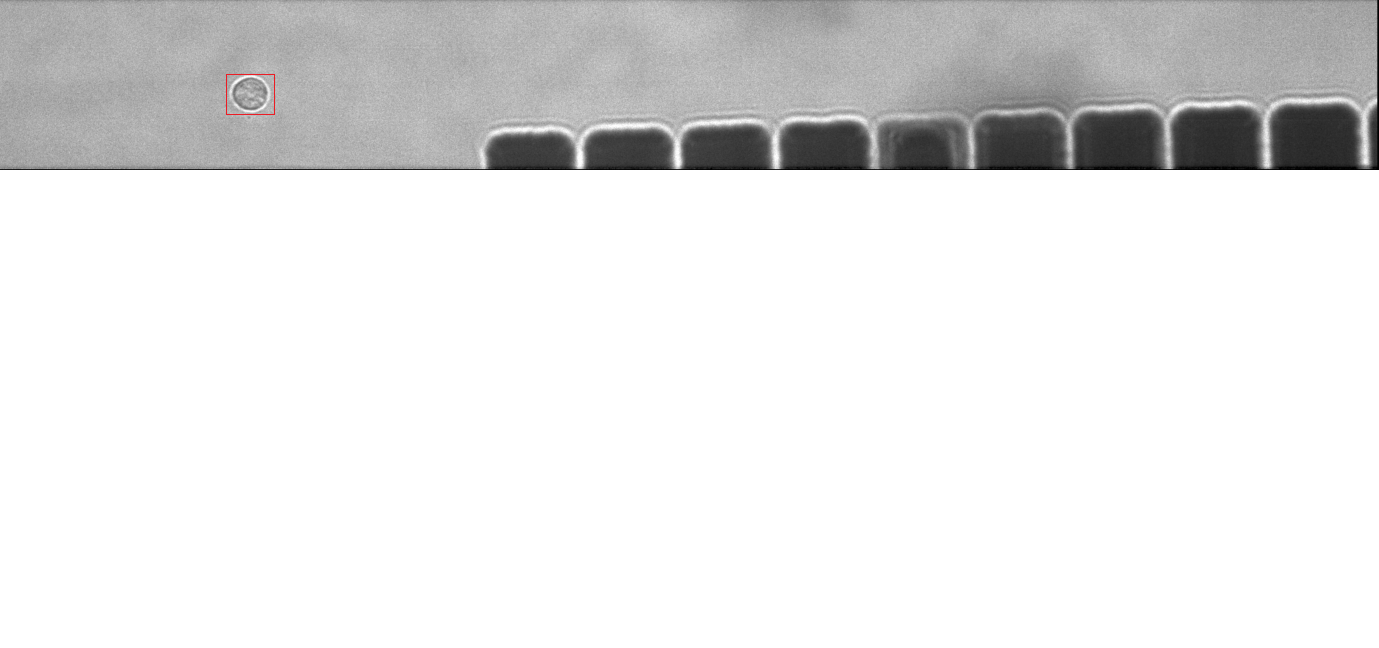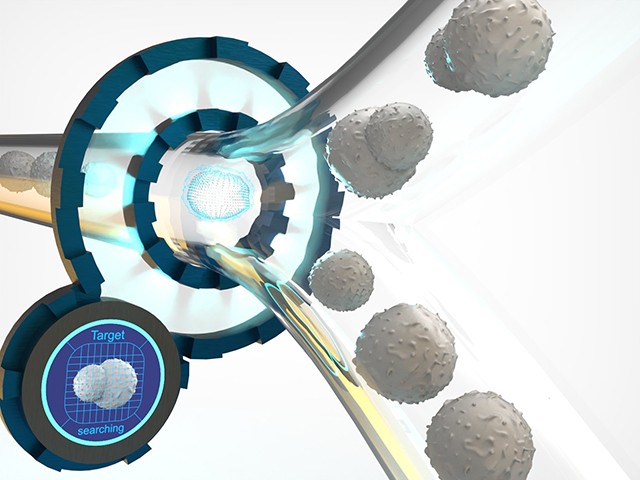In the IMAGO cell sorting project, cells are sorted according to their microscopic “appearance.” The technology uses smart image analysis in combination with neural networks.
Sorting cells: How to recognize the right cells among thousands in a matter of seconds.
27.05.2022 | #WeKnowHow
We know what cells look like under a microscope and how to discern different types of cell using specific spatial characteristics. That works for individual cells under a microscope. But if cells are rushing past our eyes in their thousands, it’s almost impossible to distinguish between them in a matter of seconds.

But is it absolutely impossible? No. In the future, the innovative imaging and microfluidic methods being developed as part of the IMAGO project will make it possible to sort cells using spatially resolved characteristics – in other words using their appearance – even at high throughput. Fraunhofer IIS is playing a key role in this development. Scientists from Fraunhofer IZI-BB, Fraunhofer IOF, Fraunhofer IIS and the Charité university hospital are working together to develop an alternative to traditional methods of cell sorting – one that uses spatially resolved characteristics. In short, IMAGO’s USP is that it offers a means of isolating cells from samples that cannot be sorted using the technologies currently available. The challenge here is the high throughput: neural networks learn the cell characteristics that determine how the cells should be sorted.

At Fraunhofer IIS, the Working Group on Medical Image Processing is responsible for cell sorting. Dr. Michaela Benz and Julia Hetzel are working on the sorting decision using real-time-capable smart image analysis. They are also developing the application software for future users, which include immunotherapy professionals: one application is CAR T-cell therapy, which requires special T cells whose job it is to attack materials that are foreign to the body. In the future, IMAGO technology could potentially “see” and separate these cells out, allowing them to be used as part of an effective therapy in the treatment of tumors. The cell sorter being developed in the IMAGO project could also eventually be used in basic medical research or in the food industry. Funded as part of the Fraunhofer PREPARE program, IMAGO ought to have a market-ready prototype finished by the end of the project.
For more information please follow this link
Dr. Michaela Benz
Since 10/2018: Deputy Manager, Working Group on Medical Image Processing, Fraunhofer IIS
Since 12/2012: Senior Scientist, Working Group on Medical Image Processing, Fraunhofer IIS
Since 01/2007: Research Fellow, Fraunhofer IIS
04/2001 to 12/2006: Research Associate, Institute of Optics, Information and Photonics, Friedrich-Alexander-Universität Erlangen-Nürnberg, special research area 603 “Model-based analysis and visualization of complex scenes and sensor data”
Julia Hetzel
02/2021: Research Fellow, Fraunhofer IIS, Working Group on Medical Image Processing
04/2018 to 01/2021: Master of Science in medical engineering, focusing on image and data processing, Friedrich-Alexander Universität Erlangen-Nürnberg
Master’s thesis at Fraunhofer IIS on “Detection and analysis of multi-stained tissue samples from gastroesophageal tumors”
10/2014 to 03/2018: Bachelor of Science in medical engineering, focusing on imaging processes, Friedrich-Alexander Universität Erlangen-Nürnberg